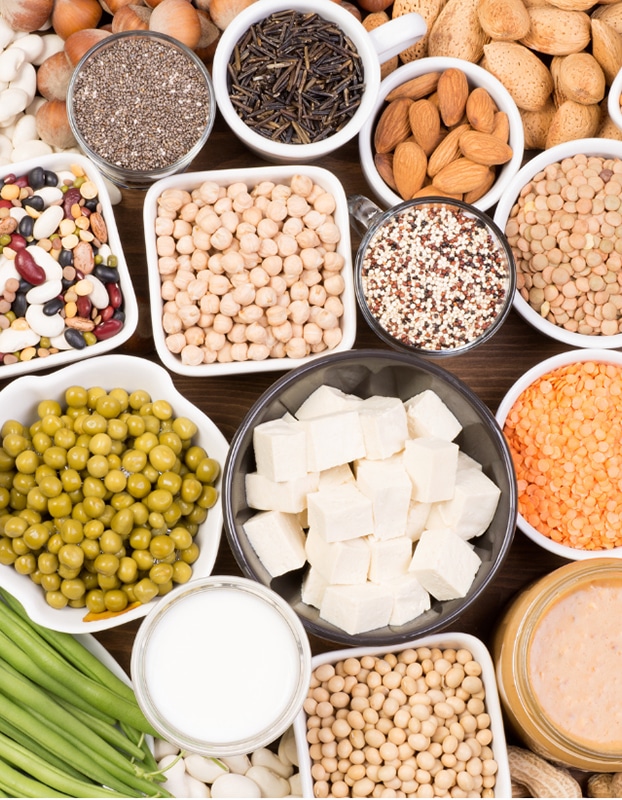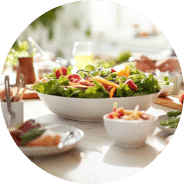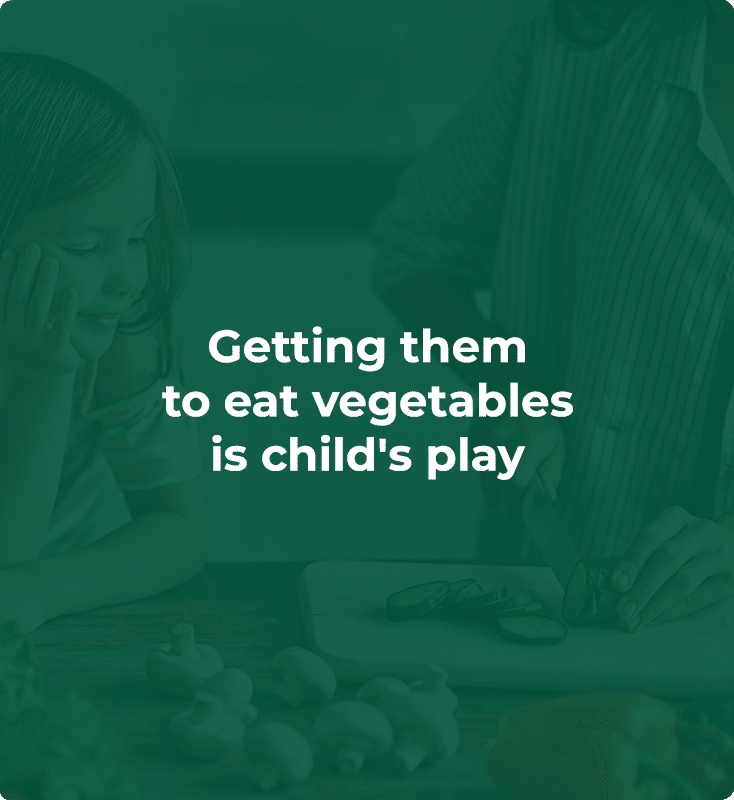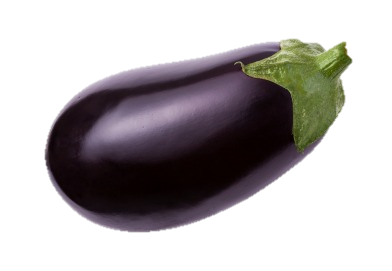Recipes we love
See all recipesLittle eggplant terrines
A starter that’s high in fibre, vitamins (A, B9, C, B12) and calcium! You can turn this into a main ...
Flan with eggplant and tomato
An original side dish that will excite the taste buds of the finest palates. This recipe provides po...
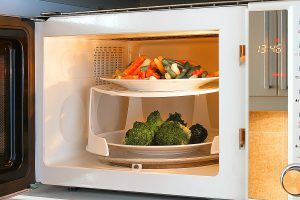
3 Reasons to Cook Your Vegetables in the Microwave
Microwaves are good not just for reheating food, but also cooking it! They offer a number of advanta...
Health benefits
A low-calorie vegetable that goes well with fats!
Nutrient-rich skin
Eggplant skin contains a huge amount of antioxidants (phenolic acids and anthocyanins), especially in darker varieties — purple eggplants contain more than white varieties.
Gentle fiber
The fiber in eggplants is mainly composed of pectin, meaning that eggplants are easy to digest, gently ensuring good digestive health.
Eggplants also contain:
- Copper
- Vitamin B1
- Vitamin B6
TNutritional composition
What’s the best time of year
to eat eggplants?
From June to September.
Eggplants are in season from June to September and sometimes even into October.
Vegetable patch
or urban balcony?
Eggplants are an annual plant that grows best in humus-rich soil in sunny conditions with lots of water.
To learn everything you need to know about growing eggplants, read the page on growing advice.
Choosing
and storage
Choosing the best eggplants:
- Squeeze the eggplant: it should be firm with smooth, shiny skin, no marks, and an even color.
- Go for smaller eggplants: they contain less water, have more flavor, and cook more evenly.
Storing eggplants:
- Eggplants should ideally be stored in the vegetable drawer in the fridge for a maximum of five days.
- Freezing is also a good way to store eggplants (in resealable bags, for up to eight months). Before freezing, slice the eggplant and blanch for five minutes in boiling water with a little lemon juice. No need to defrost before cooking.
Tips
and tricks
How to prepare eggplants:
Antioxidants aren’t the only reason not to peel eggplants. The skin adds color to dishes and limits the amount of oil or butter absorbed by the flesh, preserving its flavor.
If you really don’t like the skin, it’s easier to peel after cooking!
Three ‘anti-sponge effect’ tips: Aside from using a lot of salt, you can also poach the eggplants in salted boiling water first, or dab each side with oil/butter before cooking.
Sprinkle the flesh with lemon juice when dicing or slicing the eggplants into rounds to prevent the flesh from turning brown.
Use the following timings to cook the perfect eggplant:
- 10 mins : In the frying pan or wok
- 5 mins : Under the grill or on the barbecue in thin slices
- 40 mins : In the oven
- 1 hour: Simmered in a pot with tomatoes, peppers, and zucchini for a perfect, meltingly-soft dish
- Avoid steaming or microwaving, as these methods are not suitable for cooking eggplant
Eggplants go well with:
Eggplants go well with other vegetables, especially summer vegetables like tomatoes, zucchini, and peppers, etc.
The rather mild flavor of eggplants complements stronger (often oily) flavors: Spices (paprika, pepper, chorizo, etc.), and also cheese, meats, (lamb, beef) and fish (anchovies).
Classic dishes? Ratatouille, eggplant caviar, moussaka, and baba ganoush.
Can everyone
eat it?
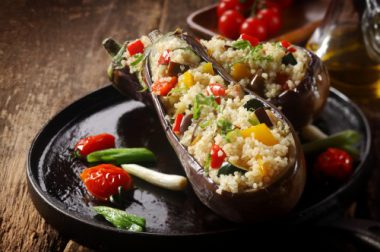
Young children
Eggplants can be eaten from the age of six months (as a purée).
Avoid steaming and chopping into large cubes as this results in a spongy texture that doesn’t appeal to children.
Serve eggplants to children as a purée as a gentle introduction to its taste. It can also be served as a caviar on bread, for a more filling dish that can be eaten without cutlery. A winning combination to get children to like vegetables!
And for others
This advice is suitable for children, adults, and older people. For older people especially, eggplants are good for hydration because of their high water content.
You can find lots of other tips for getting children to eat vegetables
Purple, white,
and pink and green too!
Origins
The dark purple, long, thick-skinned Barbatane eggplant is the most well-known variety. However, there are also many other varieties:
- The bright white, small, long, thin-skinned Dourga variety
- Pink eggplant
- Green eggplant
- The purple Chinese eggplant, which looks more like a zucchini because of its long, cylindrical shape
- The Japanese eggplant, which is white with subtle purple stripes
Varieties
Asia is the main producer of eggplants, particularly China, India, and Iran, and then Italy, Spain, Romania, Ukraine, and France.



 Purslane
Purslane  Carott
Carott  Vegetable garden: growing garden peas
Vegetable garden: growing garden peas 



